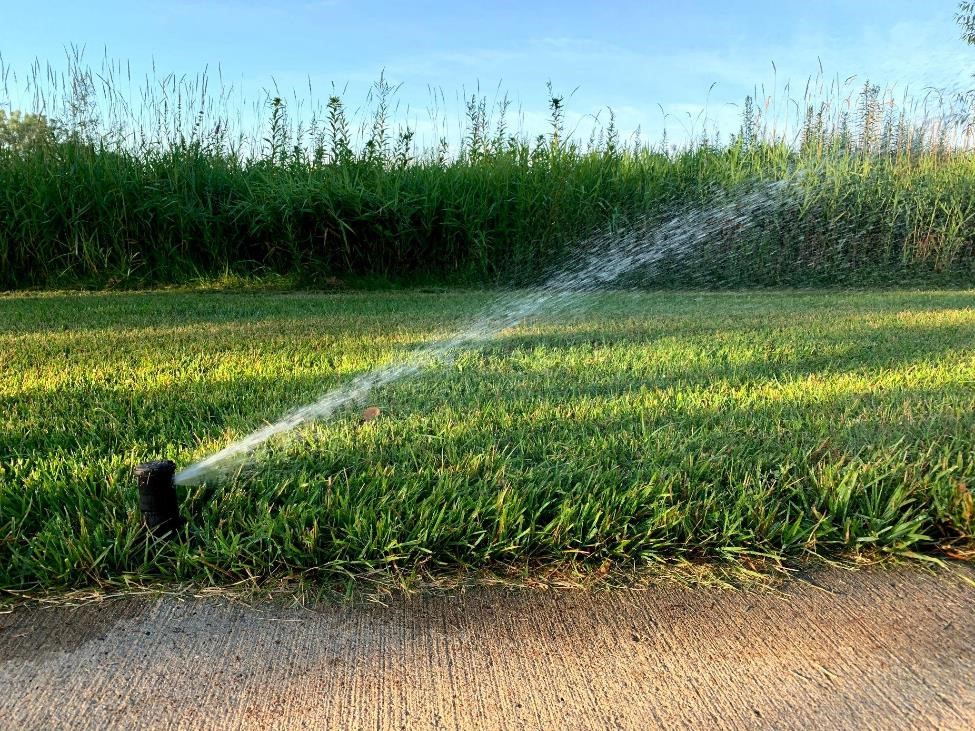By Michael Barnes
Most of us have seen a sprinkler system operating in the middle of a rainstorm, which we all can agree is a clear example of wasting water at a time of overabundance. However, outside of this clear example, several aspects of water conservation are murkier, one of which is watering restrictions. Watering restrictions are a type of use restriction that aims to curb demand for water by restricting its use for a certain period of time. Generally, watering restrictions have been found to be effective at reducing demand given some critical caveats such as the length of the restriction, education, and enforcement.
Watering restrictions are often imposed on a year-round basis in water-scarce areas, such as the southwestern United States; in places like Minnesota though, they are usually limited to the summer months of June, July, and August where peak water demand is the highest. While water scarcity issues are top of mind for folks in Phoenix or Los Angeles, people in Minneapolis or Chicago might not think about it much outside of the summer season. However, this might be changing with increased consumption in non-water scarce areas coupled with increasingly warmer and drier summers.
With all of this in mind, some questions remain about watering restrictions that we wanted to explore. First of all, how do people in a non-water-scarce area such as the Twin Cities feel about watering restrictions of various types? Second, what drives an individual's feelings about watering restrictions? And finally, how does someone's intention to water change depending on different types of watering restrictions?
Overall, we found that homeowners held generally positive attitudes towards various watering restriction scenarios with an odd-even restriction (watering based on house numbers) and a voluntary restriction (a general recommendation to conserve water) being the two most preferred. We also found that individuals who held attitudes related to water conservation were more positive about watering restrictions. Finally, someone's intention to water actually increased if they had an irrigation system even if they supported restrictions and had positive attitudes towards water conservation.
So what does this all mean for watering restrictions and water conservation in Minnesota? Well, it shows us there’s broad support for watering restrictions which is a good place to start; however, restrictions need to be coupled with education (as previous research suggested) about the importance of water conservation. Additionally, the technological solution of irrigation systems needs to be coupled with education, training, and newer smart technology (such as smart irrigation systems) to really be effective tools in conservation. The full results of our study can be found in our open-access journal article, Homeowner perceptions of watering restriction scenarios in the Minneapolis–St. Paul metropolitan area (Barnes, Yue, and Watkins, 2021).
This research was supported by the State of Minnesota Clean Water, Land and Legacy Amendment through the Metropolitan Council’s Water Supply Planning program as part of the Twin Cities Lawn Irrigation Efficiency Study, along with support from Brian Davis, Project Manager for the Metropolitan Council.
Reference
Barnes, M.R., C. Yue, and E. Watkins. 2021. Homeowner perceptions of watering restriction scenarios in the Minneapolis–St. Paul metropolitan area. Crop, Forage & Turfgrass Management. https://doi.org/10.1002/cft2.20131
